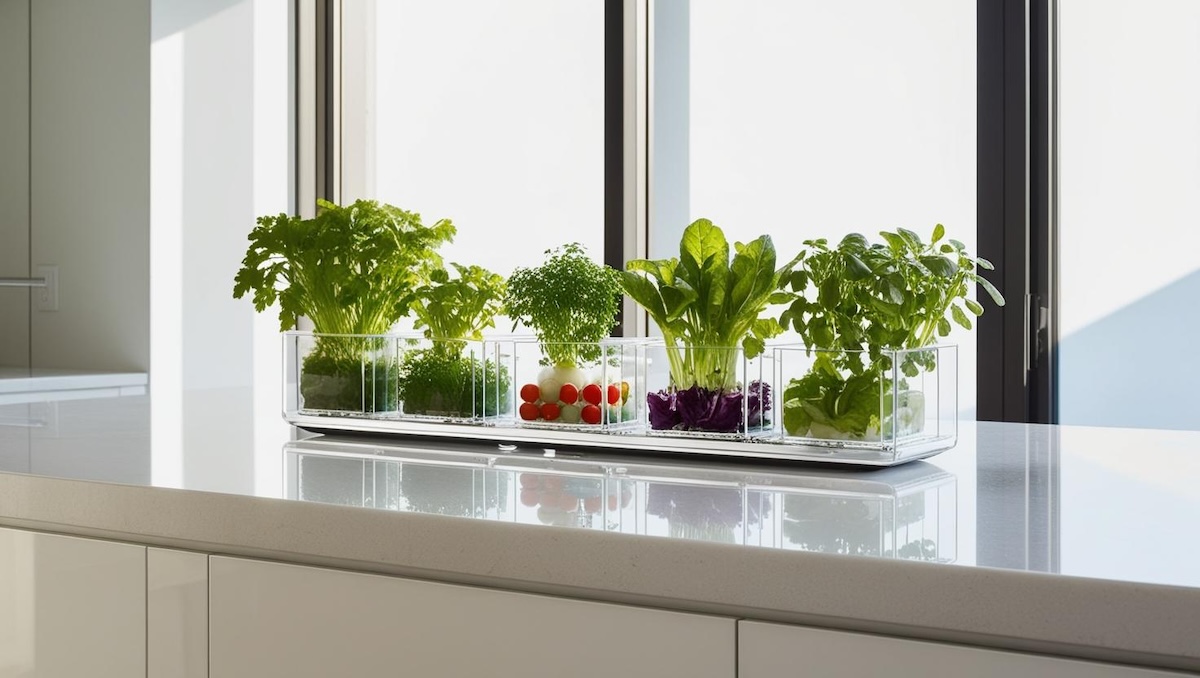Hey there! As someone who’s killed more plants than I’d like to admit (RIP, first basil plant), I’ve learned that smart indoor gardening isn’t rocket science – it’s actually pretty fun once you get the hang of it. And with today’s cool gadgets, it’s easier than ever to grow fresh herbs and veggies right in your kitchen, even if you’re as busy as I am.

Why Smart Indoor Gardening is a Game-Changer
Look, I get it. Traditional gardening can be a pain – there’s the whole mess with soil, the constant worry about watering, and don’t even get me started on trying to figure out if your plants are getting enough light. But smart indoor gardening? It’s like having a tiny greenhouse that runs itself (mostly).
The Basics: What You’ll Need
Before we jump in, here’s what you need to get started:
- A smart garden system (I’ll help you pick one)
- Growing pods or soil (depending on your setup)
- Seeds or starter plants
- A spot with access to power
- About 5 minutes a day (yes, really!)
Picking Your Smart Garden System
Here’s the thing – not all smart gardens are created equal. After testing way too many of these (my kitchen looked like a science lab for a while), here’s what really matters:
Size Matters (No, Really)
Think about your counter space. Those gorgeous Instagram photos of massive hydroponic gardens look amazing, but if you’re in a tiny apartment like I was, you might want to start smaller.
Smart Features to Look For
- Auto-watering (because nobody has time for daily watering)
- Built-in grow lights (essential for those dark kitchen corners)
- App connectivity (if you’re a tech nerd like me)
- Notifications (so you know when to add water or nutrients)
Pro Tips from My Garden Fails
- Start with herbs. They’re like the starter Pokémon of smart gardening – hardy and forgiving.
- Don’t overflow the water tank (learned this one the hard way)
- Keep your smart garden away from air vents (trust me on this one)
The Best Plants for Smart Indoor Gardens
Let me save you some trial and error. These plants are perfect for beginners:
- Basil (grows like crazy)
- Lettuce (fresh salads in weeks)
- Cherry tomatoes (if you have enough height)
- Mint (almost impossible to kill)
Common Problems (And How to Fix Them)
Because we all run into issues, here’s how to handle the most common ones:
Yellow Leaves
Usually means too much water or not enough nutrients. Check your water level and make sure you’re using the right nutrient solution.
Leggy Plants
Your lights might be too far away. Most smart gardens let you adjust the height – keep those lights close!
Making Your Garden Actually Smart
Want to take it to the next level? Here are some cool add-ons:
- Smart plugs for automated lighting
- Humidity sensors (especially good for herbs)
- Plant cameras (yes, they exist, and they’re awesome)
The Bottom Line
Smart indoor gardening isn’t just about having fancy tech – it’s about making growing your own food actually doable in real life. Trust me, there’s nothing better than grabbing fresh basil for your pasta sauce from your own kitchen garden.
Ready to get started? Check out our beginner-friendly smart garden recommendations. And hey, if you’ve got questions, drop them in the comments below. I’m always happy to help fellow plant parents avoid the mistakes I made!
Remember: The best garden is the one you’ll actually maintain. Start small, keep it simple, and have fun with it!

Leave a Reply